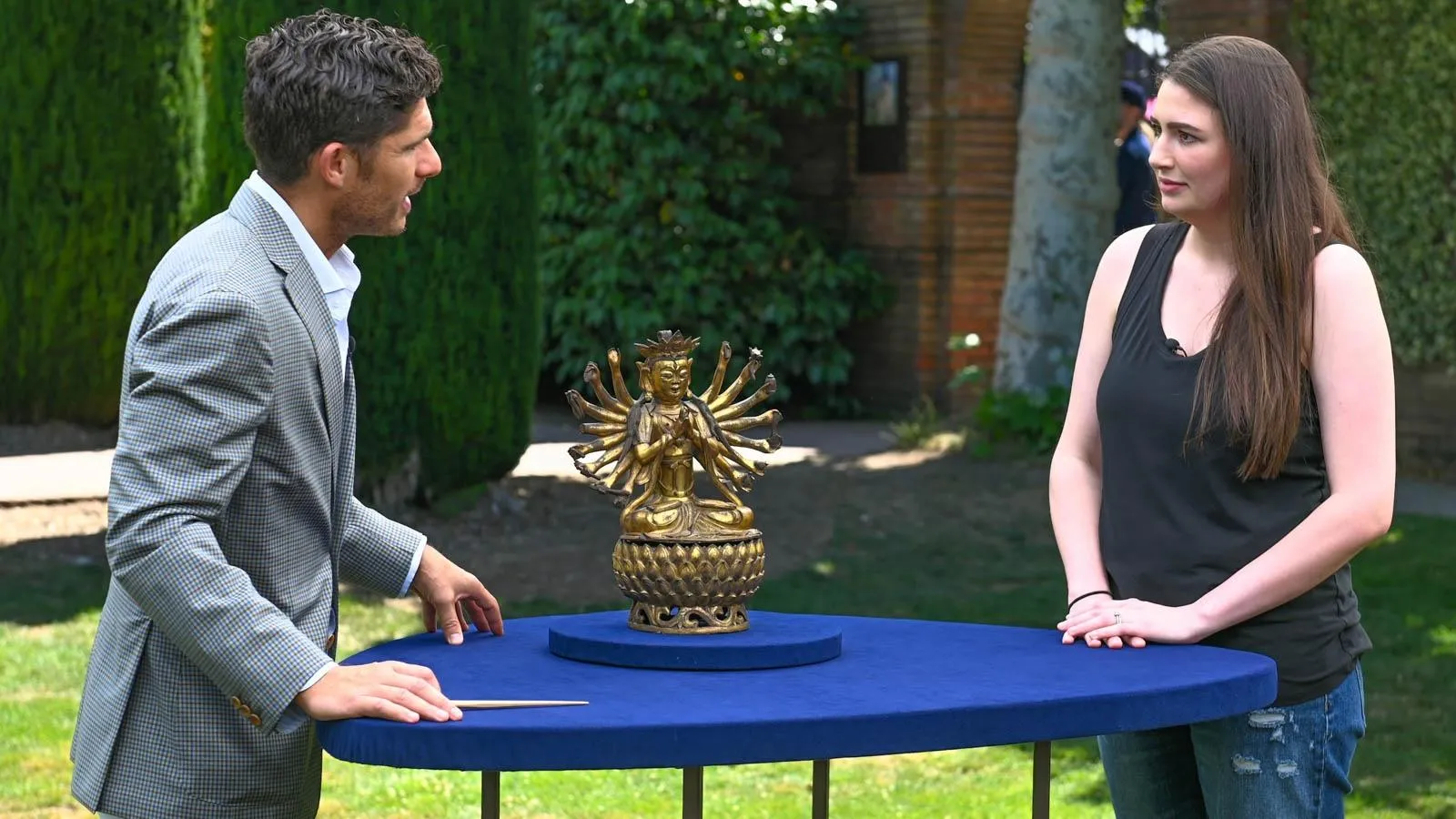GUEST: So I have this collection of T-shirts that I've been collecting since the late '90s of gay bars, uh, gay events, gay artists, various gay things, I guess. (chuckles)
APPRAISER: The big gay T-shirt collection.
GUEST: The big gay T-shirt collection.
APPRAISER: Uh, where did you find them?
GUEST: Most of them come from thrift stores.
APPRAISER: And how much do you pay in general?
GUEST: 99 cents, a dollar, five dollars. Never more than, like, $30, $40.
APPRAISER: You came in to the show today with a suitcase filled with these T- shirts-- how many...
GUEST: I did.
APPRAISER: How many were in that suitcase?
GUEST: Probably, like, 50.
APPRAISER: So...
GUEST: And I've got a couple hundred more at home.
APPRAISER: So we have a total of 15 T-shirts here on the table. The 15 shirts range in date from the 1970s through the 1990s. They encompass important events in the history of the LGBTQ-plus experience in America. Bars in both San Francisco and New York, competitions, and all sorts of different matters, uh, involving the gay community, even the work of some famous artists. We have Rex, we have Etienne. I know there's some Tom of Finland in here. Artists whose names are just intertwined in the sort of visual canon of the gay experience. In my mind, the most important and the most valuable of these is the T-shirt closest to me, for the Gay Freedom Day parade in 1978. 1970 was the first Pride parade. And at that time, it was referred to as the Gay Liberation March. The parade was still held every year. A few years later, they referred to it as Christopher Street West in San Francisco, from the Christopher Street in New York...
GUEST: Right.
APPRAISER: ...where the, where the Pride parades began there. And then finally, in the mid-1970s, they called it Gay Freedom Day. So in 1978, on June 25, was the Gay Freedom Day parade in San Francisco. And it was an important day for two reasons. It was the first time in America that the rainbow flag that, uh...
GUEST: Oh, really.
APPRAISER: ...designed by Gilbert Baker, was flown publicly. And at the end of the parade, Harvey Milk, the first openly gay, uh, politician, councilman elected, uh, in S, California, spoke at the end of the parade. The parade was in June. Several months later, in November of 1978, Harvey Milk was assassinated, so this really is not so much a T-shirt, but just an incredibly important and rare historical document. Recently, and I mean very recently-- we're in, we're in 2022 now. In the last three or four years, LGBTQ-plus history, art, material culture, and historical items have begun to be collected more and more.
GUEST: Right.
APPRAISER: Because this is such a new market, there are not a lot of comparables, so we're sort of floundering our way around. The Gay Freedom Day from 1978, in my opinion, at auction, an estimate for that one alone would be between $600 and $900. If it sold for a lot more, it wouldn't surprise me. The National Lesbian Conference shirt from 1991 and the Proud Gay American from 1993, each, I think, I would estimate them between $300 and $400. The pieces that we have lying flat are all from various clubs in San Francisco and New York. Uh, you told me, I didn't know, that the Stud actually closed during the pandemic.
GUEST: Unfortunately.
APPRAISER: My estimation is that each one of them, by and large, would be worth between $100 and $200 apiece. So I did a little bit of napkin math here.
GUEST: (chuckles)
APPRAISER: And the, uh, 15 pieces that we have on the table, I would estimate between $2,400 and $4,100 for the collection.
GUEST: It's pretty good.
APPRAISER: I mean, it's...
GUEST: For 99 cents a pop.
APPRAISER: It's, it's pretty good at any price, actually.
GUEST: Yeah.
APPRAISER: I mean, this is such a new and exciting area of collecting, the market is only growing, and it's only going to go up.



